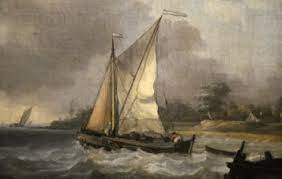Monash University to Introduce Global Encounters: Virtual Reality Journey into Australia’s First Nations History
Interdisciplinary researchers from Monash University have launched a new interactive website, providing an opportunity to explore the reframing of digital history through immersive maps and 3D models. The public-facing cultural gateway, Global Encounters showcases historical sources of encounters around Australia that are visually linked to geographical locations.
The new project is a collaboration between anthropological historian Professor Lynette Russell AM from the Faculty of Arts, and 3D modelling and virtual heritage expert Dr Tom Chandler from the Faculty of Information Technology.
Professor Russell said Global Encounters is reframing Australia’s national story by placing British encounters within a deeper history of global intrusion and exploration, developing narratives that are not merely about colonialism.
“Rather than a British colonial history which problematically begins in 1770 with Cook ‘discovering’ Australia, this will be a history that documents over 1000 years of encounter and interaction, where Indigenous people exert their agency and respond to newcomers on their own terms. The eighteenth-century British arrival will then be contextualised as part of a much longer tradition of dynamic interaction and transaction,” Professor Russell said.
The project includes a virtual reality component that reconstructs the spaces of historical encounters, and allows participants to visualise the ecology and soundscapes of pre colonial landscapes.
“Virtual reality means people can become an eyewitness to one of the most famous voyages in Australian history. You will be able to stand on the ship and see the shore coming towards you, but you’ll also be able to stand on the shore and see the ship.”
The website will showcase the potential of novel ways to interact with historical data, and is also scalable, meaning it can be accessed by Aboriginal and Torres Strait Islander people wishing to add their own stories.
Dr Chandler, who led the team developing the interactive website, said people will be able to engage in immersive landscapes that take them into an altogether different reality, into the historical ‘present’.
“This digital mapping of history invites exploration with complex constructions composed of layers of meaning and process. The dynamic elements of the virtual reality model, such as the animation of landscapes and creation of soundscapes, add depth to the historical context,” Dr Chandler said.
“For example: The 1606 encounter between the Dutch on board the Duyfken and the people of the Cape Keerweer Region in far north Queensland. This was a dramatic and violent encounter that reveals misunderstandings on both sides.”
The interactive website is funded by the Australian Research Council Laureate Scheme as part of the Global Encounters & First Nations Peoples: 1000 years of Australian History project, and generously supported by Monash University.

